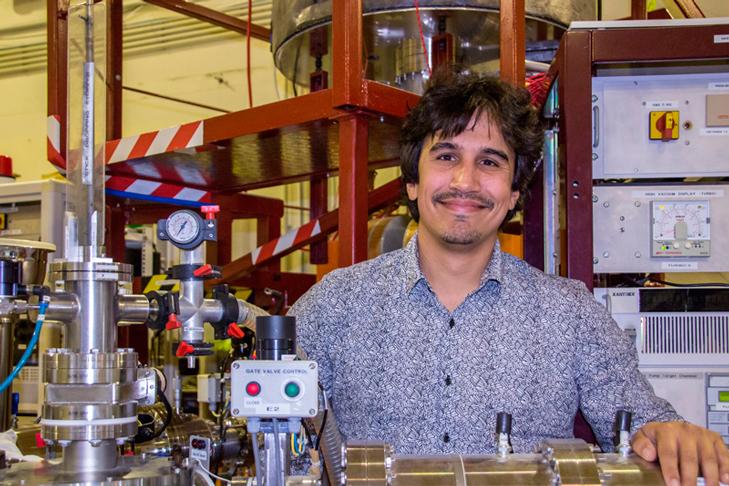Dr Jérôme Leveneur, a researcher in the Environment and Materials division of GNS Science’s National Isotope Centre, has been awarded $20,000 from the KiwiNet Emerging Innovator Fund to further develop a new nano-scale magnetic material. Dr Leveneur’s magnetic material made of nanostructures is 1000 times thinner than a human hair. The material’s small scale gives it enhanced properties over conventional magnetic materials which can be used to improve energy efficiency of transformers and inductors.
“Thematerial ishighly flexible and can be manufactured in a range of different shapes, like ‘magnetic play-dough’, to make any size and shape, which is not the case with existing materials. The ability to mould the material to any shape can be used to improve the designs and energy efficiency of inductors and transformers, for example, as we can ensure that the magnetic field goes exactly where it’s needed which is more efficient,” says Dr Leveneur.
Hebelieves the new high performance material has the potential tobenefit a wide range of industries andlead to a radical advancement in electro-magnet technologies used in areas such as inductive power transfer, radio communication and electric motors.
“When you switch regular electromagnets off they hold a fraction of their magnetism and it costs additional energy to switch them on in another direction. With nanomaterials the magnetism can be switched on and off at no additional energy cost, increasing efficiency.”
Chris Kroger, Research Manager & Deputy GM Research, GNS Science says that the research is potentially a game changer in the field of magnetic materials. It focusses on new types ofsolid nanostructuredmagnetic materials that can be moulded into any size or shape and previously only very particular shapes and sizes could be made.
“His discoveries innew functional surfaces and materials, and their application in sensor systems and manufacturing processeshold great promise to impact industry in a powerful way.”
Dr Leveneurwill work closely with New Zealandmanufacturers of transformers and inductors who could benefit from his innovative research. His goal is to demonstrate how his material can outperform current materials or investigate completely new designs that are currently unachievable through conventional methods.



